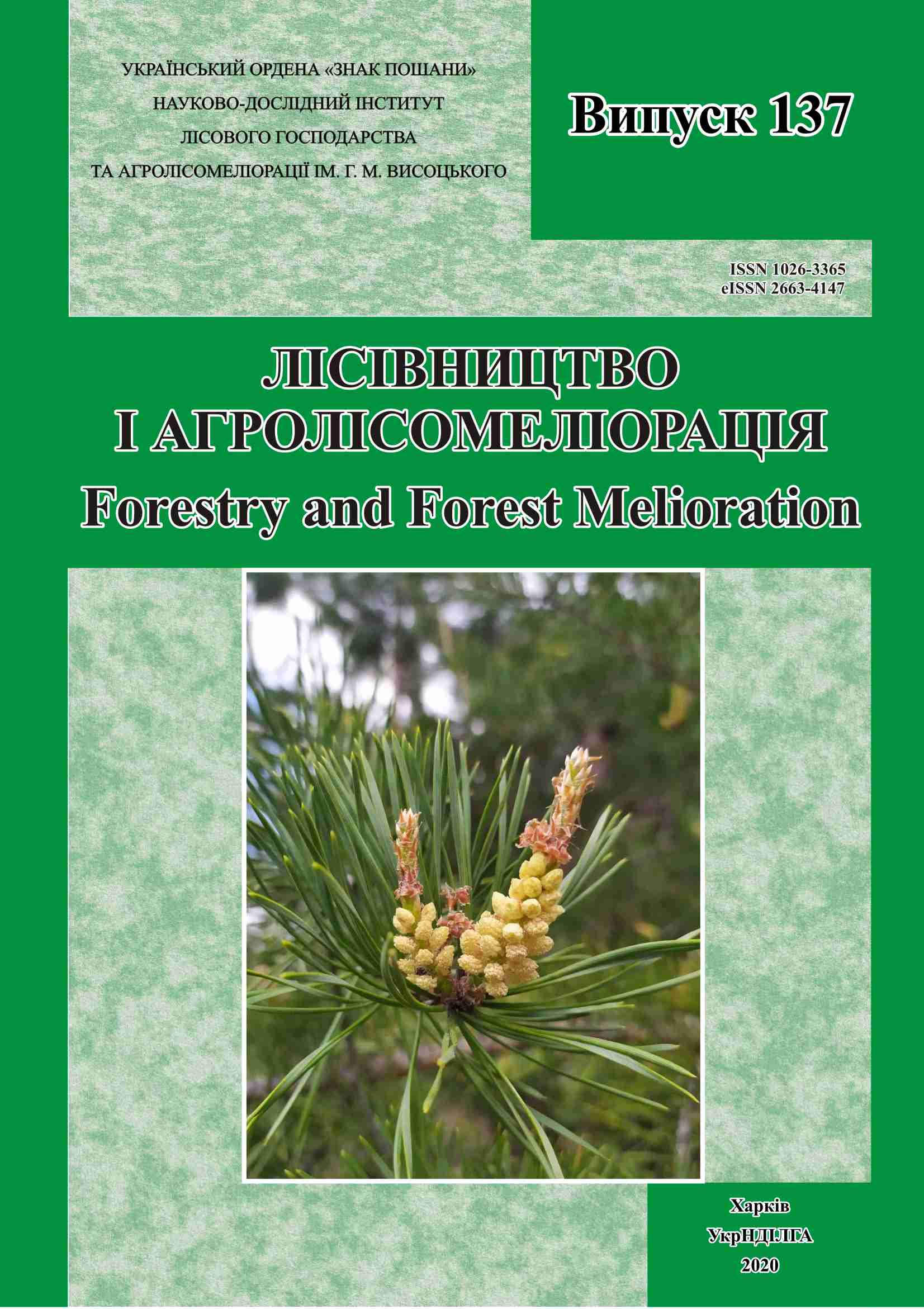Abstract
Introduction
Data from the Ukrainian forest survey and the findings of local researchers indicate possible reserves for increasing the productivity of the forests, including those within the Left-Bank Forest-Steppe. Therefore, comprehensive research on the productivity of oak stands is necessary. It would enable the development of efficient forestry activities aimed at productivity increasing and strengthening the ecological functions of oak forests in the region.
The aim of the study was to evaluate the oak stands’ productivity and the forest site capacity utilization rates for oak stands of different origins in the Left-Bank Forest-Steppe of Ukraine.
Materials and Methods
Materials from the Ukrderzhlisproekt Production Association database for the Left-Bank Forest-Steppe as of 2011 served as the basis for calculations. The area of studied oak stands of different origins was 284,000 hectares (about 70,000 inventory subcompartments). The dynamics for mensuration indicators (height, diameter, stock, etc.) was established by ten-year age classes. The quantitative evaluation of the use of forest site capacity by the oak stands was carried out by comparing the productivity of modal and reference (high-yielding) stands.
Results
The calculations show that the proportion of English oak in the stands of the Left-Bank Forest-Steppe gradually increases with age from 35–50% at the age of 20 to 70–80% at the age of 120, regardless of their origin or category of forests. The maximum values of diameter and height belong to 120-year-old stands, regardless of their origin or category of forests. Thus, the average diameter varies from 39 cm to 42 cm; the average height is in the range of 26–28 m. Among the modal oak stands of the study region, the stands established by seeding had the highest productivity, while the stands of coppice origin had the lowest one. The difference between the stocks of planted and natural stands originating from seeds increases with age from 3% to 13%. The stock difference for stands established by seeding and those of natural coppice origin increases from 3% to 22 %. The average forest site capacity utilization rates are the following: 60% for coppice oak stands in the forests of the environmental, scientific, historical and cultural purposes, 54% in the recreational and health-improving forests, 58% in the protective forests, and 66% in the commercial forests. The figures are 68%, 64%, 59% and 65%, respectively, for the oak stands of natural seed origin and 62%, 63%, 67% and 66 %, respectively, for the oak stands established by seeding. Based on the obtained results, the productivity dynamics tables for oak stands in terms of their origins and forest categories have been developed.
Conclusions
The conditions of the Left-Bank Forest-Steppe are generally favourable for the successful growth of high-yielding oak stands. However, the region is dominated by relatively low-yielding coppice oak stands. Therefore, forest management should be aimed at growing planted and natural stands originating from seeds. The developed tables for the productivity dynamics of oak stands in the context of their origins and forest categories should be used to predict the growth of modal oak stands as well as to determine the scale of forestry measures and the sequence of their implementation.
2 Figs., 2 Tables, 17 Refs.
Key words: English oak (Quercus robur L.), forest categories, stand origin, modal stands.

This work is licensed under a Creative Commons Attribution 4.0 International License.
